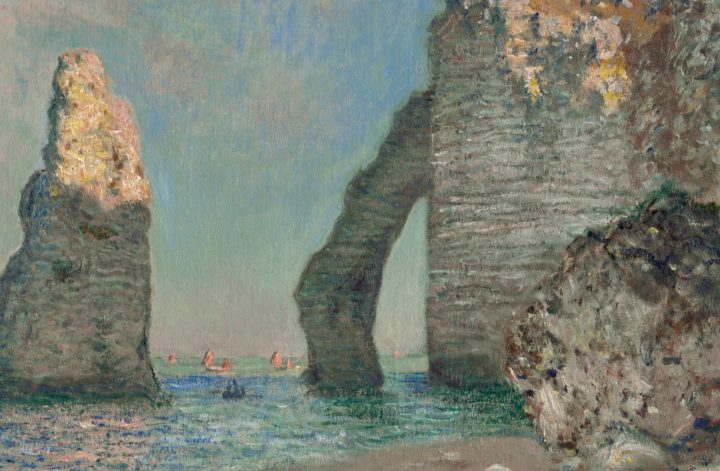By Mehreen Kabir & Naisha Patel
Written on: July 29, 2023
Last Updated: July 29, 2023
China has been accused time and again of ethnic cleansing and cultural genocide. However, there have been no proper international efforts to stop China’s actions or even keep China accountable. Today, we’ll touch on two of the main ethnic cleansing attempts by China — Xinjiang (East Turkistan) and Tibet.
“Break their lineage, break their roots, break their connections, and break their origins. Completely shovel up the roots of “two-faced people,’ dig them out, and vow to fight these two-faced people until the end.” — Maisum Jiang Maimunah, Chinese religious affairs official, August 10, 2017, on a Xinhua Weibo page. This remains a horrific quote showcasing the avid discrimination towards those of minority/marginalized groups, or in simple terms, citizens of non-Han Chinese backgrounds.
For starters, let’s talk about Uyghurs. The Uyghurs are a subculture/minority group that comes from Turkic (central Asian) descent, of which many believe in and observe in the religion of Islam. It is estimated that there are 12 million Uyghurs residing in the Xinjiang province of China. There is often discrimination towards their beliefs; and although only half of this population believes in the religion, the other half still face the same discrimination due to their ethnic roots.


Left: Uyghur cultural clothing – Image by Pieter Schepens, CC BY 2.0
Right: Turkish cultural clothing – Image by quinn.ayna, CC BY-SA 2.0
On the other hand, Tibetans are a nomadic group, mainly following Tibetan Buddhism. Many of their cultural elements, including their religious values and language, are derived from broader Indian culture. There has always been a rich sense of culture in Tibet, especially prior to the 1950s. However, the Chinese had forcefully occupied Tibet in 1949. After a decade of repressive occupation, on March 10, 1959, over 30,000 Tibetans began to protest after hearing the news of China’s plans to abduct the Dalai Lama. On March 11, the formal declaration of Tibetan independence was given. The Chinese military responded with a brutal crackdown on Tibetans, with thousands dying over the next few weeks.

Tibetan children wearing cultural clothing – Source, CC BY SA 3.0
As much as news on social media surrounds this topic, it is still highly unfortunate how less it is discussed. The Uyghurs are often detained in concentration camps, but Chinese propaganda suggests otherwise, labelling them “re-education camps”. Many of the practices performed within the camps go against countless human rights acts as per the UN — forced marriages, sterilizations, unpaid labour, and religious conversions are just a few of the horrific acts faced by these civilians. The current government in China, the CCP (Chinese Communist Party), believe these human beings to be guilty. And their crime? Practising their beliefs.

Uyghurs in “re-education” camps – Image From an article titled “用情感敲开心灵大门 用说理舒缓群众情绪”, published by the WeChat MP platform account “Xinjiang Juridical Administration”, via Baidu Baijiahao platform archive Original image creator: 牙生, Fair use
The CCP defends these actions by saying these camps, or “vocational training centres”, are aimed at combating religious extremism. However, even ordinary religious acts like going to the mosque can be a reason for sending someone to the camps. The forced sterilizations by the camps are justified by Chinese academics, who say that population growth in ethnic minorities threatens social stability and national identity.
The government took similar measures with Tibet as they did with Uyghurs, barring cultural, religious and linguistic freedom. Since 1959, almost all of the around 6,000 monasteries have been destroyed, save for a dozen. In the months following 1959, nuns and monks were made to give up their vows, with the ones resisting being killed or imprisoned and tortured. Many of the older monks today had spent around two decades of imprisonment due to this.
In both cases, China has introduced residential schools for young children. They use these schools to strip children away from their culture, heritage, religion and family, in a similar fashion to Canada’s assimilation of Indigenous children in residential schools. Approximately one million Tibetan children have been forced into residential schools, with there being little to no efforts from the Chinese government to teach the Tibetan language in these schools. The children are kept away from their families for extended periods of time and even taught military drills at school. These are all attempts to turn the Tibetan youth into pro-CCP government workers. Uyghur children that have since fled China, on the other hand, have reported having their heads shaved and being hit and locked in dark rooms. The children were being raised in Turkey and got forcibly taken away from their parents on a mere visit to China. They had forgotten how to speak both Uyghur and Turkish on their return from the residential schools. The psychological impacts of going through such mistreatment last much longer than the actual duration of the school. Upon reunification with their families, the Uyghur children were reported to hide whenever guests came over, get flashbacks in dark rooms and much more. Separating children from their families and forcing them to give up their culture has proved to be a cruel yet effective method for erasing entire cultures, as seen in the past with Indigenous cultures in Canada, USA and Australia.
And thus, the CCP has already been somewhat successful in the erasure of these cultures and their daily lives. Tibetan farmers are routinely made to give up land to Han Chinese buyers. The Chinese government has also stationed around a million Han Chinese in Uyghur households to make sure that the Uyghur are conforming to Han Chinese cultural norms rather than Uyghur ones. Despite this being potentially uncomfortable for the Uyghur families, they are not allowed to refuse the monitoring by Han Chinese. There are said to be military checkpoints everywhere, and any Muslim or Middle Eastern symbols, such as face or head veils, have disappeared.
However, certain parts of Xinjiang and Tibet have been made into surface-level tourist attractions. It is as if the CCP wants a visually diverse country, but not an ethnically diverse one. The attractions and even the local people are seen as mere exotic beings, and centuries of rich culture are getting lost in the midst of creating commercial tourist destinations. Tibetans are seen as interesting yet primitive and uneducated people, similar to how Native Americans are perceived in the Americas and Australia. Similarly, Uyghurs are often perceived as terrorists or extremists with no concrete proof, yet many Uyghur women are hired by modelling agencies for their exotic and Eurocentric features (bigger eyes, sharper noses and thicker eyebrows). Tibetan monasteries, at least the ones that remain after decades of oppression, are often disrupted by non-Tibetan Chinese tourists who are neither aware of the cultural significance nor the history of oppression in Tibet. Xinjiang has also gained traction in the tourism sector because of its sceneries resembling the Middle East and its connection to the Ancient Silk Road. The things that had caused the CCP to oppress these groups of people, i.e. Buddhism in Tibet and Islam in Xinjiang, are the same things that it uses to profit from these areas. What is even more outrageous is that Tibetans and Uyghurs do not have an automatic right to a Chinese passport, causing them to not have nearly the same amount of travel opportunities as other ethnicities seem to do.

Top: Parwena Dulkun, an Uyghur model well-known for her “exotic” features – Source
Bottom: Han Chinese Model posing at a religious site in Tibet
China needs to be kept accountable for these actions towards its ethnic minorities. Rather than suppressing minorities and promoting only surface-level diversity, China should embrace its diversity as a whole.



